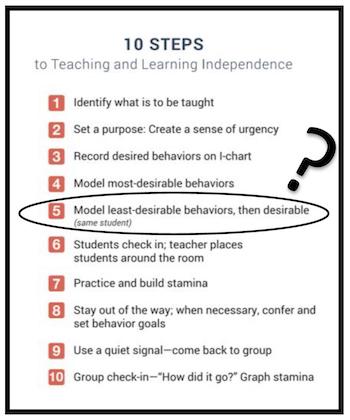10 Steps to Teaching and Learning Independence—Is Step 5 Necessary?
Join Our Community
Access this resource now. Get up to three resources every month for free.
Choose from thousands of articles, lessons, guides, videos, and printables.
 The 10 Steps to Teaching and Learning Independence follow the gradual release process. The first three steps are teacher directed and provide the “I do” of what is being taught. This is where the teacher tells students what is to be taught and why it is needed, and then lists the expected behaviors for both the students and the teacher.
The 10 Steps to Teaching and Learning Independence follow the gradual release process. The first three steps are teacher directed and provide the “I do” of what is being taught. This is where the teacher tells students what is to be taught and why it is needed, and then lists the expected behaviors for both the students and the teacher.
The next two steps provide the “we do” part of the process. This is where students model what it looks like (step 4) and what it doesn’t look like (step 5) to do the behavior.
The final five steps shift the action to the students. It is during these steps that students have a chance to practice, build stamina, and reflect.
Fidelity to the 10 Steps ensures success. If we skip even one step, our success rate will diminish. When looking at step 5—model least-desirable behaviors, then desirable—people sometimes ask why we would want to model least-desirable behaviors, or if step 5 is even needed.
We explain the purpose and importance of step 5 in three key points.
- John Hattie’s meta-analysis says the effect size of peer influences is .53 or higher. This means that when we provide social comparisons, rehearsal, and deliberate practice, we see more than a year of growth. When students model for each other and practice the correct and incorrect way, they internalize what it looks and feels like to engage in the behavior correctly, while also knowing what is not acceptable.
- Hattie’s meta-analysis also shows the high effect of teacher clarity (.75). When we explicitly explain both the right way and the wrong way, we are being clear with our expectations by comparing both types of behavior. After both models, we always ask the important question, “If [student name] continues to do these things, will he/she become a better reader?” This question ties student behavior to the success criteria listed on the chart.
- We always end with the correct model. Step 5 is model least-desirable behaviors, then desirable. This is so students are always left with seeing and feeling the correct way, clearly knowing what is expected, so they can be successful.





